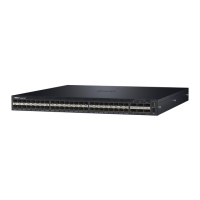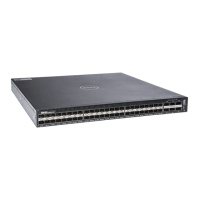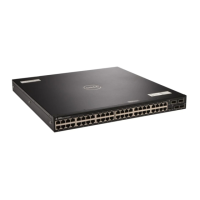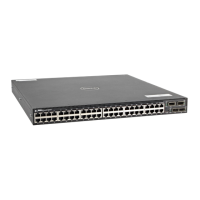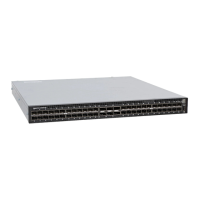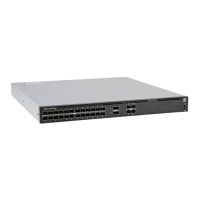Applying a DCB Map on a Port
When you apply a DCB map with PFC enabled on a switch interface, a memory buffer for PFC-enabled
priority traffic is automatically allocated. The buffer size is allocated according to the number of PFC-enabled
priorities in the assigned map.
To apply a DCB map to an Ethernet port, follow these steps:
Table 17. DCB Map to an Ethernet Port
Step Task Command Command Mode
1
Enter interface configuration mode on an
Ethernet port.
interface
{tengigabitEthernet
slot/port [/subport]
|
fortygigabitEthernets
lot/port}
CONFIGURATION
2
Apply the DCB map on the Ethernet port to
configure it with the PFC and ETS settings in the
map; for example:
Dell# interface tengigabitEthernet
1/1
Dell(config-if-te-1/1)# dcb-map
SAN_A_dcb_map1 Repeat Steps 1 and 2 to apply
a DCB map to more than one port.
You cannot apply a DCB map on an interface
that has been already configured for PFC using
thepfc priority command or which is
already configured for lossless queues (
pfc no-
drop queues command).
dcb-map name
INTERFACE
Configuring PFC without a DCB Map
In a network topology that uses the default ETS bandwidth allocation (assigns equal bandwidth to each
priority), you can also enable PFC for specific dot1p-priorities on individual interfaces without using a DCB
Data Center Bridging (DCB) 305
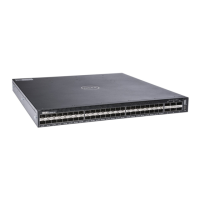
